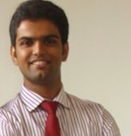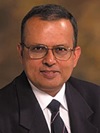Not to take anything away from Mr. Modi, but this celebration’s a little closer to the heart!
Congratulations to our very own Seidenberg grad student – Arbaaz Sayyed, on being elected the new President of the Pace Indian Students Association (PISA).
We were lucky enough to spend some time with him before he headed off to India for the summer – one heck of a victory lap and some serious planning for PISA! Here’s what we found out.

Q. Pick 5 words that describe you the best.
A. Leader. Perfectionist. Experienced. Sociable. Um, modest? (…he said with a wide grin)
Q. What makes you qualified for this role?
A. Within the last 8 years, I’ve been a Committee Member, an Organizational Secretary, and a Chairperson. I’ve even coordinated activities for the IEEE in India .It becomes a-lot more fun when you love what you do. My first job at Pace was with SDACA. We did some great work for the student body.
Q. Tell us about PISA.
A. PISA is a cultural, professional and social association made up primarily of Indian students at Pace. Up until last year it was purely for Lubin students, but now it’s open to everyone. One of our main focuses this year will be to better connect with all the incoming international students so that we can offer them a better experience at Pace. I’d also like to slowly grow the work PISA does and collaborate with other existing associations & clubs at the university, so as to provide a more holistic member experience.
Q. What will your first move be?
A. Right now, our agenda is to plan and execute events for humanitarian causes, professional development workshops and networking opportunities for students.
Q. How can one join PISA?
A. Just walk into one of our meetings. It’s that simple! You can even email me at as07113n@pace.edu or call me on 646-492-8590.
“It’s a proud moment,” says Dean Amar Gupta of The Seidenberg School of Computer Science & Information Systems.

“The Pace Indian Students Association (PISA) originally started as the PISA Graduate Student Organization at the Lubin School. During recent months, its scope was widened to include Seidenberg, and we are honored that Arbaaz Sayyed from our school has been elected as its President. With his interest in Leadership activities and his diverse background, Arbaaz is ideally suited to lead this organization. My hope is that the scope of the activities and the membership will continue to grow under his leadership.”
– Interviewed by Suhail Bhandari







